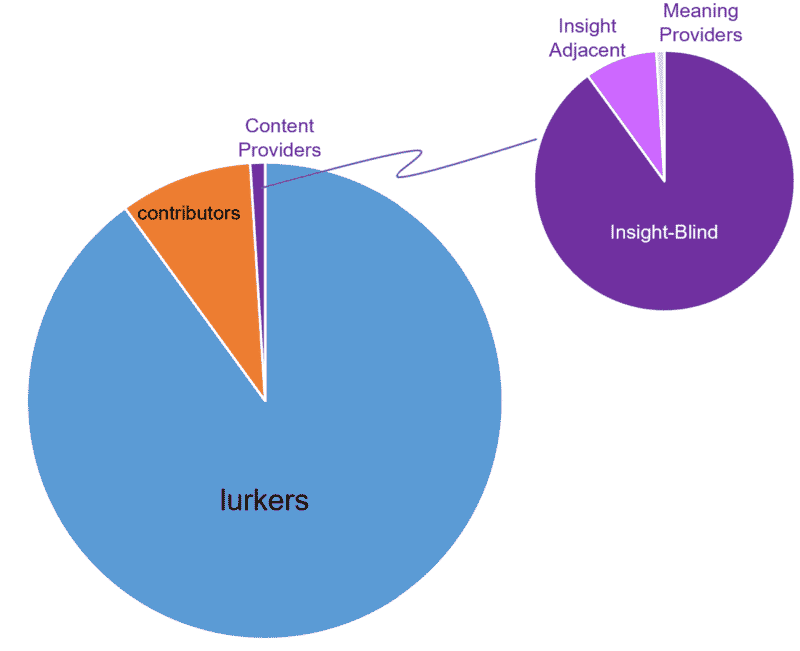A rule about online engagement has floated around the internet for a few years now. It is called the Rule of Participation Inequality, or the 90:9:1 Principle. It goes something like this:
User participation in any online internet community generally follows the 90:9:1 principle:
- 90% of community members are lurkers who read or observe, but don’t contribute
- 9% of community members edit or respond to content but don’t create content of their own
- 1% of community members create new content
I think the Principle applies to quite a lot more than just online communities. In fact, I’m struggling to find situations where it doesn’t apply. Certainly, when innovation attempts are seeking to understand prospective customers better, one of the most effective shortcuts says to go and find the 1% (‘influencers’) and tap into their perspectives and opinions.
Except, not quite. In Innovation World – a place where we’re looking for step-change, ’10x’ solutions – it is always important to remember the (too-)oft used Henry Ford quote, “If I had asked people what they wanted, they would have said faster horses.” Customers, in other words, tend to be step-change-blind. In amongst the myriad other biases we all carry around with us, comes Zero-Sum Bias. This is the bias that encourages us to believe that life is a big game of whack-a-mole. The moment we solve one problem, the next one turns up. Life is win-lose.
The combination of this pair of inherent weaknesses leads to the recognition that, when it comes to innovation, most people’s instincts are, at best, ‘unhelpful’. I have a sneaking suspicion that the pair also forms much of the basis for Carlo Cipolla’s ‘Basic Laws Of Human Stupidity. And especially Law 1: ‘Everyone always and inevitably underestimates the number of stupid people in circulation’.
It is with Cipolla’s life-changing (life-affirming? (Cipolla isn’t trying to be cruel)) essay in mind that has caused Systematic Innovation World to implement our own version of the 90:9:1 Principle. Enter the (90:9:1)squared version. Which states that, once you’ve found the 1% of useful ‘content providers’, that 1% is subject to another 90:9:1 split:
90% of the 1% will be irretrievably caught in the Faster-Horse/Zero-Sum traps
9% of the 1% can intellectually accept the traps are escapable
1% of the 1% have successfully escaped the traps at some point in their lives
Or, put another way, about 0.01% of a population are able to provide meaningful innovation insight.

The first implication of this is that, unless we have access to very high numbers of interviewees or surveyees and even better filters, we’re better off not bothering.
The second is that, if you can find the meaning providers, you should try and keep a tight hold of them.
The third is that the tighter you hold, the faster they will escape.
